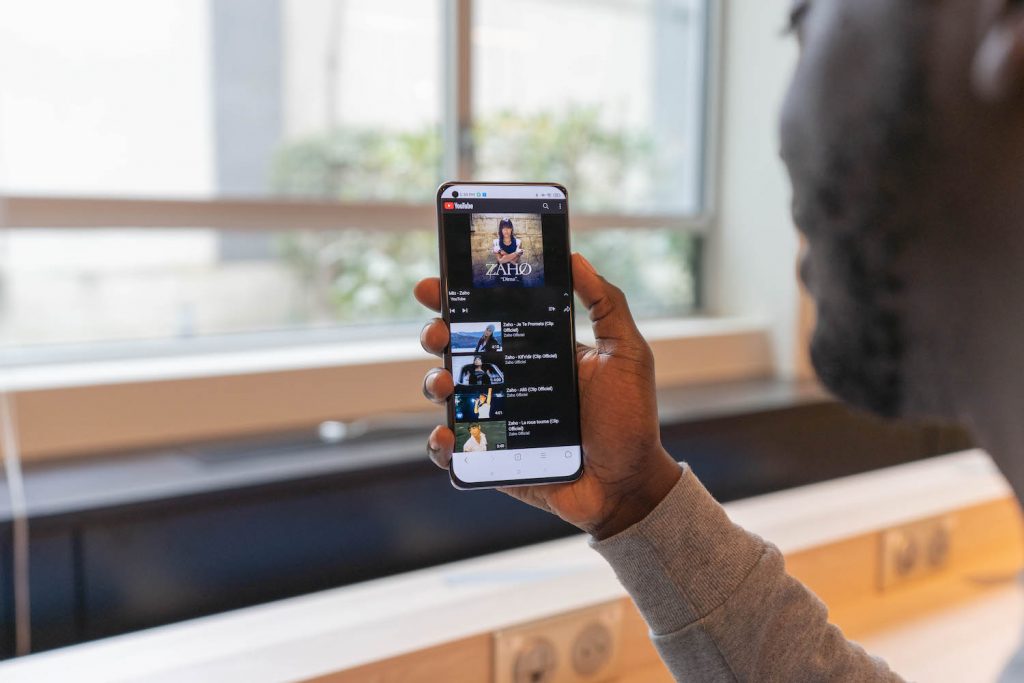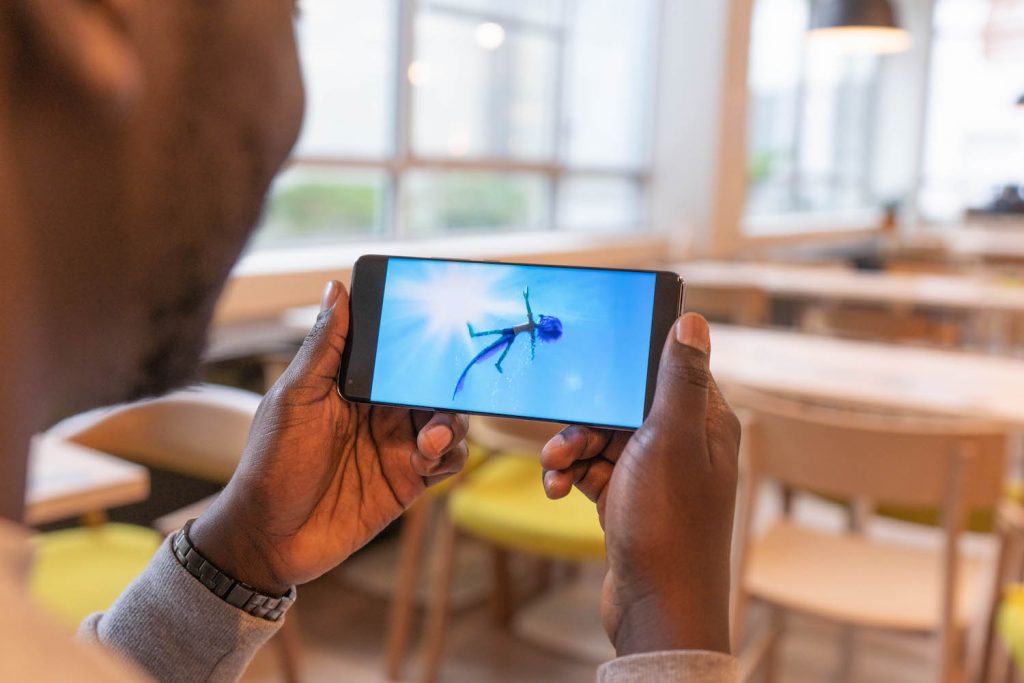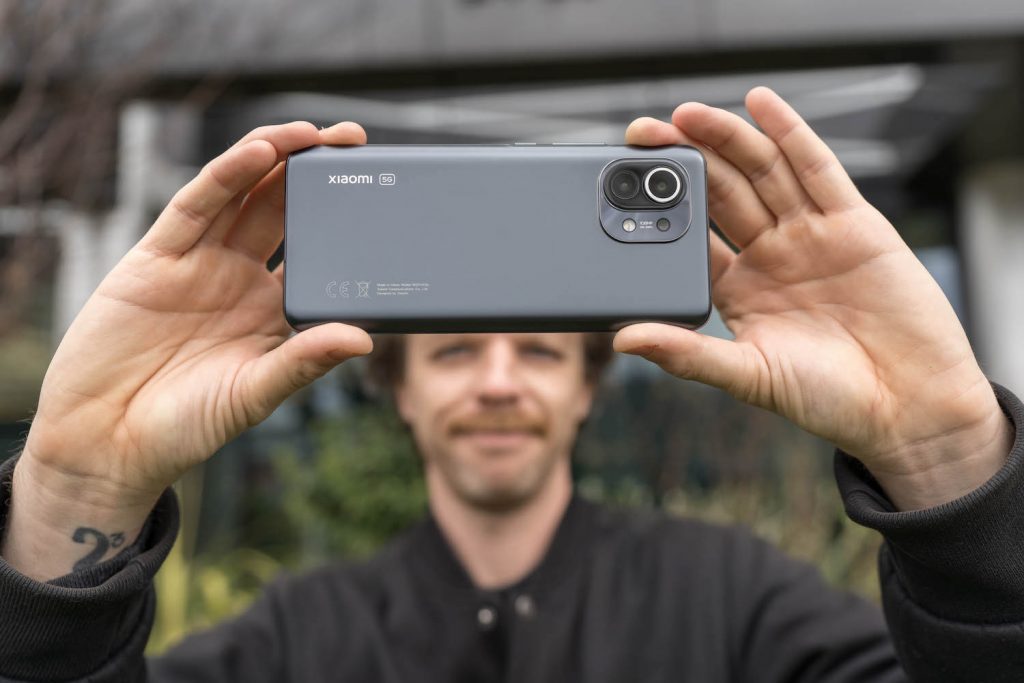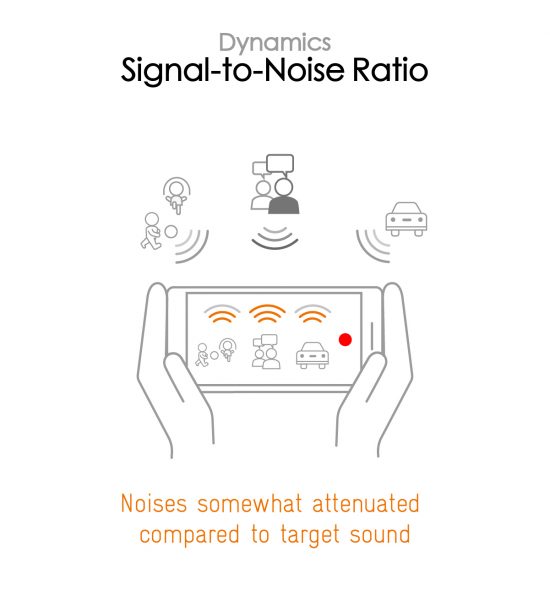Released just a few months ago, the Xiaomi Mi 11 is another challenger from the Chinese brand, with impressive specs that match or exceed other top flagships while undercutting the price a bit. Along with the Qualcomm top-end Snapdragon 888 chipset inside, and plenty of computing power and memory (8 GB of RAM and 128 or 256 GB of UFS 3.1 storage), the device also has a WQHD+ 6.81″ AMOLED display with a 120 Hz refresh rate.
On the audio front, Xiaomi is touting sound by Harman Kardon for its stereo speaker setup. We put the Xiaomi Mi 11 through our rigorous DXOMARK Audio test suite to measure its performance both at recording sound using its built-in microphones, and at playing audio back through its built-in speakers. In this review, we will break down how it fared in a variety of tests and several common use cases.
Audio specifications include:
- Dual speakers, bottom right side firing and top left side firing
- Type-C interface for headphones
- Sound by Harman Kardon
About DXOMARK Audio tests: For scoring and analysis in our smartphone audio reviews, DXOMARK engineers perform a variety of objective tests and undertake more than 20 hours of perceptual evaluation under controlled lab conditions. This article highlights the most important results of our testing. Note that we evaluate both Playback and Recording using only the device’s built-in hardware and default apps. (For more details about our Playback protocol, click here; for more details about our Recording protocol, click here.)
Test summary
Scoring
Sub-scores and attributes included in the calculations of the global score.

Xiaomi Mi 11


 130th
130th 38th
38thPlayback
Pros
- Very few artifacts
- Accurate bass precision
- Good wideness
Cons
- Tonal balance suffers because of lack of lower extension and upper midrange.
- Lack of punch and clarity at low volumes
- Minimum volume is too low.
Recording
Cons
- Overall sound is slightly muffled.
- The stereo scene is quite narrow in selfie videos.
- Lots of artifacts produced when recording at high SPL.
With a global score of 68, the Xiaomi Mi 11 sits just on the edge of the top 20 in our smartphone audio database, tying with the Samsung Galaxy S20 Ultra and the Asus ROG Phone 2, among several others.
In playback testing, the Xiaomi Mi 11 demonstrated correct treble and high-end extension, accurate bass precision, and good wideness. It had a good showing for artifacts, with very few detected overall.

The tonal balance suffers, however, from a lack of low-end extension and upper midrange. At soft volume, the Xiaomi Mi 11 lacks punch and clarity. Muffled voices impair the distance performance, and the minimum volume is too low.
As a recording device, the Mi 11 had good tonal balance in normal, unchallenging conditions. The signal-to-noise ratio (SNR) was correct in all of the use cases we tested. In terms of dynamics, the envelope produced was accurate in our simulated use cases. In life video, wideness and localizability were very good, and the audio files recorded by the device have a good loudness in most use cases tested.
Drawbacks included sound that was slightly muffled overall and in most use cases. In selfie video, the stereo scene is very narrow. At high sound pressure levels (SPL), performance was significantly impaired by many artifacts, especially distortions.
Sub-scores explained
The DXOMARK Audio overall score of 68 for the Xiaomi Mi 11 is derived from its Playback and Recording scores and their respective sub-scores. In this section, we’ll take a closer look at these audio quality sub-scores and explain what they mean for the user.
Playback
Timbre tests measure how well a phone reproduces sound across the audible tonal range and takes into account bass, midrange, treble, tonal balance, and volume dependency.
The Xiaomi Mi 11 had a surprisingly low timbre performance considering how well some of its brand siblings had performed in earlier testing. The Xiaomi Mi 10S, for example, earned a 79 in this category, placing it in the upper echelon of tested devices. The Mi 10 Pro also did better, with a score of 78.
On the plus side, treble and high-end extension are correct. But from there a variety of issues emerge. Midrange is somewhat inconsistent because upper mids are slightly lacking. This contributes to a tonal balance that lacks clarity, especially for classical music and for voices.

The tonal balance also suffers because of a lack of low-end extension, and the few sensations of bass one perceives are delivered only by low mids. At soft volume and in the games use case, the lack of clarity is even more noticeable, and tonal balance is muffled.

Dynamics
Xiaomi Mi 11
67
81
DXOMARK’s dynamics tests measure how well a device reproduces the energy level of a sound source, and how precisely it reproduces bass frequencies.
The Xiaomi Mi 11 did fairly well in playback dynamics. Attack performance was average, and the rendering of transients was decent. Despite the lack of low-end extension, bass precision was surprisingly on target. Punch performance was adequate except at soft volume, where the lack of low-end was a hindrance.


Sub-attributes for perceptual spatial tests include localizability, balance, distance, and wideness.
The Xiaomi device delivered an average performance in the spatial attribute, tying with both versions of the Samsung Galaxy Note20 Ultra 5G and the Poco X3 NFC.
Localizability was adequate, although less so when listening to content in portrait mode, a problem that occurs with almost all smartphones. The balance was good, but centered items were perceived as slightly higher than they should be. Wideness, a function of the stereo speakers, was good. Distance performance, however, was slightly hindered by inconsistent midrange, as the lack of upper mids makes voices sound distant and muffled.


Volume
Xiaomi Mi 11
69
91
Volume tests measure both the overall loudness a device is able to reproduce and how smoothly volume increases and decreases based on user input.
The Xiaomi Mi 11 turned in an above-average performance in the volume category. Maximum volume is correct, although at minimum volume, highly dynamic music like classical is difficult to hear properly.
| Hip-Hop | Classical | |
| Xiaomi Mi 11 | 74.7 dBA | 71.3 dBA |
| Xiaomi Mi 10 Pro | 73.8 dBA | 69.5 dBA |

Artifacts
Xiaomi Mi 11
87
113
Artifacts tests measure how much source audio is distorted when played back through a device’s speakers. Distortion can occur both because of sound processing in the device and because of the quality of the speakers.
The Xiaomi device turned in a very strong performance in the artifacts attribute, putting it in good company among other smartphones. Very few artifacts were discernible. Among them, noise is slightly enhanced on the reference tracks our engineers use in testing, and low-end distortion was perceived when playing music at maximum volume.
Recording


Timbre
Xiaomi Mi 11
78
91
With a score of 78, the Xiaomi Mi 11 is in good company in recording timbre. Its brand mate, the Mi 10S shares the top score of 86 in this attribute among devices our engineers have tested. When recording in regular conditions in our simulated use cases, tonal balance is quite good overall. Because midrange lacks clarity and treble could benefit from more top end, overall sound is slightly muffled, especially when loud background noise is present.
For recordings made at high SPL, such as the electronic music concert use case, the performance was decent but impaired by many artifacts. Heavy distortions strongly affect treble and bass presence, and tend to accentuate high midrange, which is already prominent.

Dynamics
Xiaomi Mi 11
59
81
When it came to recording dynamics, the Xiaomi Mi 11 was a bit disappointing, especially considering how well some other recent devices from the brand scored here. The SNR was fairly good in all use cases tested, even if the lack of clarity tends to decrease the overall performance. In simulated use cases, the envelope is accurate. In the high SPL scenario, however, strong temporal and spectral artifacts impaired the envelope.



Spatial
Xiaomi Mi 11
59
78
The spatial performance of the Xiaomi Mi 11 is a mixed bag. Bright spots include good localizability and very good wideness in life video. But in selfie video, localizability is limited, and wideness is quite poor because the stereo scene is quite narrow (at least in part because the phone is being held in portrait mode). Distance performance is impaired because the voices are slightly muffled. Our engineers detected no directivity in life or selfie videos.


Volume
Xiaomi Mi 11
59
99
The Xiaomi Mi 11 had an above-average score in our recording volume attribute. Audio files recorded by the device have good loudness in most use cases tested. Maximum recording volume without distortion is quite low, though, which leads to quite a few spectral artifacts when making high SPL recordings.
Here are our test results, measured in LUFS (Loudness Unit Full Scale). As a reference, we expect loudness levels to be above -24 LUFS for recorded content.
| Meeting | Life Video | Selfie Video | Memo | |
| Xiaomi Mi 11 | -29.2 LUFS | -21.5 LUFS | -19.6 LUFS | -20.4 LUFS |
| Xiaomi Mi 10 Pro | -27.4 LUFS | -20.3 LUFS | -18.6 LUFS | -21 LUFS |

Artifacts
Xiaomi Mi 11
58
97
The Xiaomi Mi 11 did not shine in the recording artifacts attribute, landing in the bottom third of our rankings. Detectable pumping effects and distortion were noted on loud content such as shouting voices. Recordings made at high SPL demonstrated slight overshoots on kick drum as well as a pumping effect that was induced by strong compression and limiting. Along the entire spectrum there was strong distortion on snares and high-pitched instruments. You can check for artifacts yourself in this recording:

Background
Xiaomi Mi 11
43
60
The Xiaomi device performed fairly well on background. There was realistic rendering with very few artifacts. Tonal balance was good, but slightly lacks bass and top-end.

Conclusion
In light of how well the Xiaomi Mi 10S and Mi 10 Pro performed in our audio testing, the results delivered by the Xiaomi Mi 11 were puzzling. Points that had been strengths on the 10 line devices, such as timbre in both playback and recording, were less so in the Mi 11.
That said, the device was overall better than average and at least functional across our use case scenarios. On playback, the device had very few noticeable artifacts, good wideness from the Harman Kardon-tuned speakers, accurate bass precision (even without much bass to work with), and correct treble and high-end extension. The lack of low-end and upper midrange threw off the tonal balance, however.
In recording, the Mi 11 produced average to above-average results, except in artifacts, where it faltered. The tonal balance of its recordings were good under normal conditions, and the SNR was well managed across the range of use cases. Localizability and wideness were strong points in life video.
While the recording envelope was accurate in the simulated use cases, the Mi 11’s performance was significantly impaired when recording in high SPL situations such as an electronic music concert, producing a lot of artifacts. Overall, the sound was slightly muffled in most use cases.



DXOMARK encourages its readers to share comments on the articles. To read or post comments, Disqus cookies are required. Change your Cookies Preferences and read more about our Comment Policy.